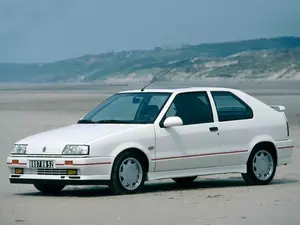
| Vehicle | Curb weight | Difference from world's smallest | Weight to power ratio | 0—60 mph acceleration ratio | Consumption ratio |
|---|---|---|---|---|---|
| 1.4i |
965 kg / 2128 lbs |
540 kg (1191 lbs) heavier | 16 kg to 1 hp | 68 kg/s (150 lbs/s) |
140 kg/L (309 lbs/L) |
| 1.6i |
965 kg / 2128 lbs |
540 kg (1191 lbs) heavier | 11 kg to 1 hp | 68 kg/s (150 lbs/s) |
140 kg/L (309 lbs/L) |
| Vehicle | 1.4i |
|---|---|
| Curb weight |
965 kg / 2128 lbs |
| Difference from world's smallest | 540 kg (540 lbs) heavier |
| Weight to power ratio | 16 kg to 1 hp |
| 0—60 mph acceleration ratio | 68 kg/s (150 lbs/s) |
| Consumption ratio |
140 kg/L (309 lbs/L) |
| Vehicle | 1.6i |
| Curb weight |
965 kg / 2128 lbs |
| Difference from world's smallest | 540 kg (540 lbs) heavier |
| Weight to power ratio | 11 kg to 1 hp |
| 0—60 mph acceleration ratio | 68 kg/s (150 lbs/s) |
| Consumption ratio |
140 kg/L (309 lbs/L) |
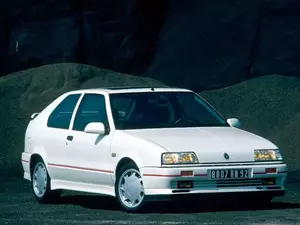
| Vehicle | Curb weight | Difference from world's smallest | Weight to power ratio | 0—60 mph acceleration ratio | Consumption ratio |
|---|---|---|---|---|---|
| 1.4i |
970 kg / 2139 lbs |
545 kg (1202 lbs) heavier | 12 kg to 1 hp | 84 kg/s (185 lbs/s) |
147 kg/L (324 lbs/L) |
| 1.4 i |
965 kg / 2128 lbs |
540 kg (1191 lbs) heavier | 16 kg to 1 hp | 68 kg/s (150 lbs/s) |
140 kg/L (309 lbs/L) |
| 1.8 i |
1045 kg / 2304 lbs |
620 kg (1367 lbs) heavier | 10 kg to 1 hp | 111 kg/s (245 lbs/s) |
126 kg/L (278 lbs/L) |
| 1.8 i 16V |
1160 kg / 2558 lbs |
735 kg (1621 lbs) heavier | 8 kg to 1 hp | 143 kg/s (315 lbs/s) |
153 kg/L (337 lbs/L) |
| 1.7i |
970 kg / 2139 lbs |
545 kg (1202 lbs) heavier | 13 kg to 1 hp | 83 kg/s (183 lbs/s) |
135 kg/L (298 lbs/L) |
| 1.8i s |
1025 kg / 2260 lbs |
600 kg (1323 lbs) heavier | 11 kg to 1 hp | 99 kg/s (218 lbs/s) |
127 kg/L (280 lbs/L) |
| 1.9 D |
1030 kg / 2271 lbs |
605 kg (1334 lbs) heavier | 16 kg to 1 hp | 69 kg/s (152 lbs/s) |
172 kg/L (379 lbs/L) |
| 1.9 DT |
1065 kg / 2348 lbs |
640 kg (1411 lbs) heavier | 12 kg to 1 hp | 99 kg/s (218 lbs/s) |
181 kg/L (399 lbs/L) |
| Vehicle | 1.4i |
|---|---|
| Curb weight |
970 kg / 2139 lbs |
| Difference from world's smallest | 545 kg (545 lbs) heavier |
| Weight to power ratio | 12 kg to 1 hp |
| 0—60 mph acceleration ratio | 84 kg/s (185 lbs/s) |
| Consumption ratio |
147 kg/L (324 lbs/L) |
| Vehicle | 1.4 i |
| Curb weight |
965 kg / 2128 lbs |
| Difference from world's smallest | 540 kg (540 lbs) heavier |
| Weight to power ratio | 16 kg to 1 hp |
| 0—60 mph acceleration ratio | 68 kg/s (150 lbs/s) |
| Consumption ratio |
140 kg/L (309 lbs/L) |
| Vehicle | 1.8 i |
| Curb weight |
1045 kg / 2304 lbs |
| Difference from world's smallest | 620 kg (620 lbs) heavier |
| Weight to power ratio | 10 kg to 1 hp |
| 0—60 mph acceleration ratio | 111 kg/s (245 lbs/s) |
| Consumption ratio |
126 kg/L (278 lbs/L) |
| Vehicle | 1.8 i 16V |
| Curb weight |
1160 kg / 2558 lbs |
| Difference from world's smallest | 735 kg (735 lbs) heavier |
| Weight to power ratio | 8 kg to 1 hp |
| 0—60 mph acceleration ratio | 143 kg/s (315 lbs/s) |
| Consumption ratio |
153 kg/L (337 lbs/L) |
| Vehicle | 1.7i |
| Curb weight |
970 kg / 2139 lbs |
| Difference from world's smallest | 545 kg (545 lbs) heavier |
| Weight to power ratio | 13 kg to 1 hp |
| 0—60 mph acceleration ratio | 83 kg/s (183 lbs/s) |
| Consumption ratio |
135 kg/L (298 lbs/L) |
| Vehicle | 1.8i s |
| Curb weight |
1025 kg / 2260 lbs |
| Difference from world's smallest | 600 kg (600 lbs) heavier |
| Weight to power ratio | 11 kg to 1 hp |
| 0—60 mph acceleration ratio | 99 kg/s (218 lbs/s) |
| Consumption ratio |
127 kg/L (280 lbs/L) |
| Vehicle | 1.9 D |
| Curb weight |
1030 kg / 2271 lbs |
| Difference from world's smallest | 605 kg (605 lbs) heavier |
| Weight to power ratio | 16 kg to 1 hp |
| 0—60 mph acceleration ratio | 69 kg/s (152 lbs/s) |
| Consumption ratio |
172 kg/L (379 lbs/L) |
| Vehicle | 1.9 DT |
| Curb weight |
1065 kg / 2348 lbs |
| Difference from world's smallest | 640 kg (640 lbs) heavier |
| Weight to power ratio | 12 kg to 1 hp |
| 0—60 mph acceleration ratio | 99 kg/s (218 lbs/s) |
| Consumption ratio |
181 kg/L (399 lbs/L) |
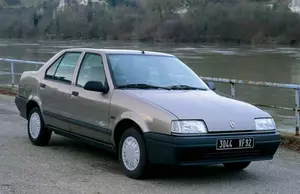
| Vehicle | Curb weight | Difference from world's smallest | Weight to power ratio | 0—60 mph acceleration ratio | Consumption ratio |
|---|---|---|---|---|---|
| 1.4i |
970 kg / 2139 lbs |
545 kg (1202 lbs) heavier | 12 kg to 1 hp | 84 kg/s (185 lbs/s) |
147 kg/L (324 lbs/L) |
| 1.4 i |
965 kg / 2128 lbs |
540 kg (1191 lbs) heavier | 16 kg to 1 hp | 68 kg/s (150 lbs/s) |
140 kg/L (309 lbs/L) |
| 1.7i |
990 kg / 2183 lbs |
565 kg (1246 lbs) heavier | 14 kg to 1 hp | 85 kg/s (187 lbs/s) |
138 kg/L (304 lbs/L) |
| 1.8 i 16V |
1160 kg / 2558 lbs |
735 kg (1621 lbs) heavier | 9 kg to 1 hp | 143 kg/s (315 lbs/s) |
153 kg/L (337 lbs/L) |
| 1.8 i |
1065 kg / 2348 lbs |
640 kg (1411 lbs) heavier | 9 kg to 1 hp | 113 kg/s (249 lbs/s) |
133 kg/L (293 lbs/L) |
| 1.8i s |
1045 kg / 2304 lbs |
620 kg (1367 lbs) heavier | 12 kg to 1 hp | 100 kg/s (221 lbs/s) |
129 kg/L (284 lbs/L) |
| 1.9 DT |
1085 kg / 2392 lbs |
660 kg (1455 lbs) heavier | 12 kg to 1 hp | 100 kg/s (221 lbs/s) |
184 kg/L (406 lbs/L) |
| 1.9 D |
1050 kg / 2315 lbs |
625 kg (1378 lbs) heavier | 16 kg to 1 hp | 70 kg/s (154 lbs/s) |
175 kg/L (386 lbs/L) |
| Vehicle | 1.4i |
|---|---|
| Curb weight |
970 kg / 2139 lbs |
| Difference from world's smallest | 545 kg (545 lbs) heavier |
| Weight to power ratio | 12 kg to 1 hp |
| 0—60 mph acceleration ratio | 84 kg/s (185 lbs/s) |
| Consumption ratio |
147 kg/L (324 lbs/L) |
| Vehicle | 1.4 i |
| Curb weight |
965 kg / 2128 lbs |
| Difference from world's smallest | 540 kg (540 lbs) heavier |
| Weight to power ratio | 16 kg to 1 hp |
| 0—60 mph acceleration ratio | 68 kg/s (150 lbs/s) |
| Consumption ratio |
140 kg/L (309 lbs/L) |
| Vehicle | 1.7i |
| Curb weight |
990 kg / 2183 lbs |
| Difference from world's smallest | 565 kg (565 lbs) heavier |
| Weight to power ratio | 14 kg to 1 hp |
| 0—60 mph acceleration ratio | 85 kg/s (187 lbs/s) |
| Consumption ratio |
138 kg/L (304 lbs/L) |
| Vehicle | 1.8 i 16V |
| Curb weight |
1160 kg / 2558 lbs |
| Difference from world's smallest | 735 kg (735 lbs) heavier |
| Weight to power ratio | 9 kg to 1 hp |
| 0—60 mph acceleration ratio | 143 kg/s (315 lbs/s) |
| Consumption ratio |
153 kg/L (337 lbs/L) |
| Vehicle | 1.8 i |
| Curb weight |
1065 kg / 2348 lbs |
| Difference from world's smallest | 640 kg (640 lbs) heavier |
| Weight to power ratio | 9 kg to 1 hp |
| 0—60 mph acceleration ratio | 113 kg/s (249 lbs/s) |
| Consumption ratio |
133 kg/L (293 lbs/L) |
| Vehicle | 1.8i s |
| Curb weight |
1045 kg / 2304 lbs |
| Difference from world's smallest | 620 kg (620 lbs) heavier |
| Weight to power ratio | 12 kg to 1 hp |
| 0—60 mph acceleration ratio | 100 kg/s (221 lbs/s) |
| Consumption ratio |
129 kg/L (284 lbs/L) |
| Vehicle | 1.9 DT |
| Curb weight |
1085 kg / 2392 lbs |
| Difference from world's smallest | 660 kg (660 lbs) heavier |
| Weight to power ratio | 12 kg to 1 hp |
| 0—60 mph acceleration ratio | 100 kg/s (221 lbs/s) |
| Consumption ratio |
184 kg/L (406 lbs/L) |
| Vehicle | 1.9 D |
| Curb weight |
1050 kg / 2315 lbs |
| Difference from world's smallest | 625 kg (625 lbs) heavier |
| Weight to power ratio | 16 kg to 1 hp |
| 0—60 mph acceleration ratio | 70 kg/s (154 lbs/s) |
| Consumption ratio |
175 kg/L (386 lbs/L) |
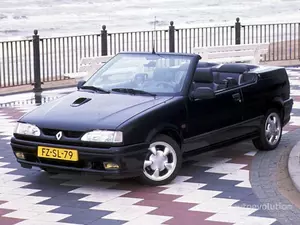
| Vehicle | Curb weight | Difference from world's smallest | Weight to power ratio | 0—60 mph acceleration ratio | Consumption ratio |
|---|---|---|---|---|---|
| 1.8 i 16V |
1190 kg / 2624 lbs |
765 kg (1687 lbs) heavier | 9 kg to 1 hp | 134 kg/s (295 lbs/s) |
143 kg/L (315 lbs/L) |
| 1.8i |
1125 kg / 2481 lbs |
700 kg (1544 lbs) heavier | 13 kg to 1 hp | 100 kg/s (221 lbs/s) |
136 kg/L (300 lbs/L) |
| 1.8 i RSi |
1145 kg / 2525 lbs |
720 kg (1588 lbs) heavier | 11 kg to 1 hp | 110 kg/s (243 lbs/s) |
135 kg/L (298 lbs/L) |
| Vehicle | 1.8 i 16V |
|---|---|
| Curb weight |
1190 kg / 2624 lbs |
| Difference from world's smallest | 765 kg (765 lbs) heavier |
| Weight to power ratio | 9 kg to 1 hp |
| 0—60 mph acceleration ratio | 134 kg/s (295 lbs/s) |
| Consumption ratio |
143 kg/L (315 lbs/L) |
| Vehicle | 1.8i |
| Curb weight |
1125 kg / 2481 lbs |
| Difference from world's smallest | 700 kg (700 lbs) heavier |
| Weight to power ratio | 13 kg to 1 hp |
| 0—60 mph acceleration ratio | 100 kg/s (221 lbs/s) |
| Consumption ratio |
136 kg/L (300 lbs/L) |
| Vehicle | 1.8 i RSi |
| Curb weight |
1145 kg / 2525 lbs |
| Difference from world's smallest | 720 kg (720 lbs) heavier |
| Weight to power ratio | 11 kg to 1 hp |
| 0—60 mph acceleration ratio | 110 kg/s (243 lbs/s) |
| Consumption ratio |
135 kg/L (298 lbs/L) |
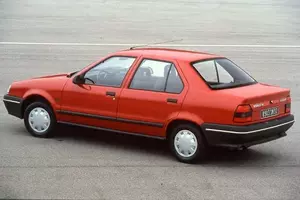
| Vehicle | Curb weight | Difference from world's smallest | Weight to power ratio | 0—60 mph acceleration ratio | Consumption ratio |
|---|---|---|---|---|---|
| 1.7 |
1004 kg / 2214 lbs |
579 kg (1277 lbs) heavier | 11 kg to 1 hp | 98 kg/s (216 lbs/s) |
127 kg/L (280 lbs/L) |
| Vehicle | 1.7 |
|---|---|
| Curb weight |
1004 kg / 2214 lbs |
| Difference from world's smallest | 579 kg (579 lbs) heavier |
| Weight to power ratio | 11 kg to 1 hp |
| 0—60 mph acceleration ratio | 98 kg/s (216 lbs/s) |
| Consumption ratio |
127 kg/L (280 lbs/L) |
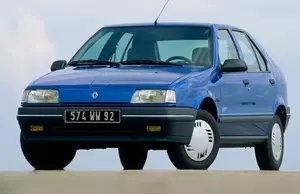
| Vehicle | Curb weight | Difference from world's smallest | Weight to power ratio | 0—60 mph acceleration ratio | Consumption ratio |
|---|---|---|---|---|---|
| 1.4 |
950 kg / 2095 lbs |
525 kg (1158 lbs) heavier | 16 kg to 1 hp | - |
136 kg/L (300 lbs/L) |
| Vehicle | 1.4 |
|---|---|
| Curb weight |
950 kg / 2095 lbs |
| Difference from world's smallest | 525 kg (525 lbs) heavier |
| Weight to power ratio | 16 kg to 1 hp |
| 0—60 mph acceleration ratio | - |
| Consumption ratio |
136 kg/L (300 lbs/L) |